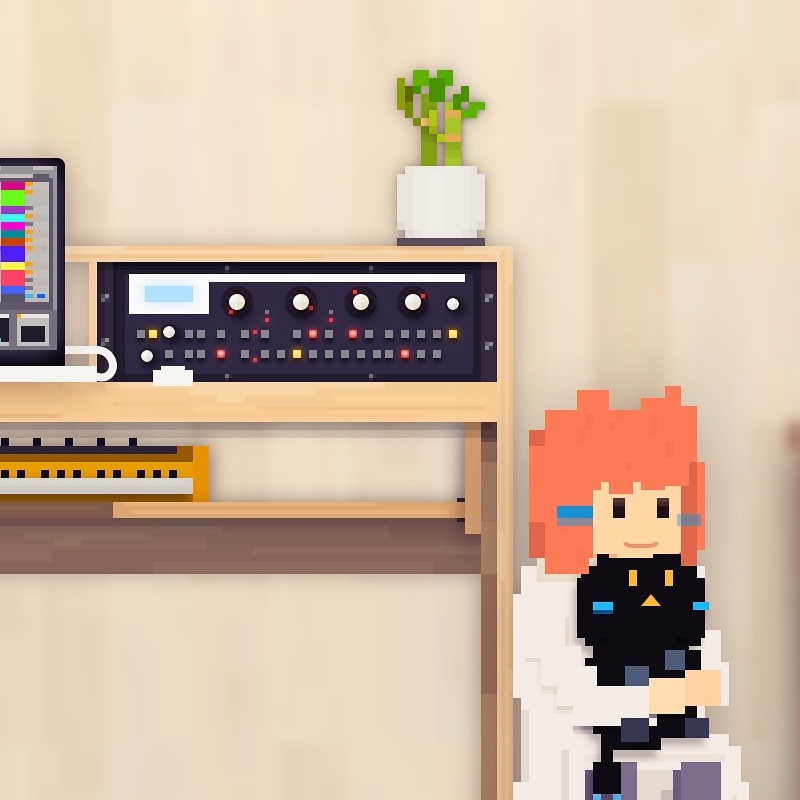Contents
4. Case Examples
Now, let’s listen to some example songs and see how tonal gravitation works in practice.
Re and Tonal Gravitation
“Closer” by The Chainsmokers is a very good example of what effect re brings about when it resolves by ascending, by descending or avoid resolution because the melody in the pre-drop part contains all of them.
You can see how distinct the melody is; it always starts with do–re–re (except for the very beginning) and the musical story is constructed solely with the resolution patterns of re.
Re is a medium tendency tone and is in a floating state until it resolves. Listen to the melody and feel the difference between re–mi and re–do, or the sense of suspension when a phrase ends with re.
Unresolving Re
“LIKEY” by TWICE is a great example using unresolving re. The keyword “likey” is repeated in the persistent pitch of re resolving nowhere.
The choice here is excellent—The floating state of re perfectly conveys bouncy and stoked vibes, which best fit to this part. Stable tones are uncalled-for here, for they’ll spoil this excited mood with its firm stability. Or strong tendency tones are not suitable either, since they’re too unstable to repeat this much continuously.
La and Tonal Gravitation
“Stand By Me” by Ben E. King contains unresolving la as well as those resolve by descending.
It is notable that the phrase “stand by me” ends with unresolving la, which bears a sense of lingering and hopefully make it rather impressive.
Stable Tones
do, mi and so, on the other hand, have no tendency. So you can repeat these notes endlessly without any care about tension-release. I’d like to show you some unique cases.
Repetition of Do
In “Love You Like That” by Dagny, the whole chorus part is made with pure repetition of do.
Repetition of Mi
“Licorice” by Spitz, a Japanese Rock band, is a peculiar song whose chorus part consists of only one tone, mi.
Repetition of So
“Uta-Usagi” contains persistent repetition of so in the verse part (from 0:45-0:58).
In these songs the melody is extremely monotonous but colored by background chords. Thus not only do but also mi and so are in a sufficiently stable state, having no need of resolving. Such repetitions are much more normal than persisting with unstable tones like the case in “LIKEY”.
5. Supplementary Information
The mechanism of melody seems to be simple but actually there’s more to it.
What About Minor Key?
So far the explanation is solely based on a major key, where do works as the center. But thinking of the other environment, a minor key, la is the boss governing the scale. Therefore in a minor key a different tonal gravitation is organized; la becomes the most stable tone and so turns an unstable tone gravitated toward la.
This will be discussed further in chapter III.
The relation with Chords
One very important factor is the chords on which melodies are played. As you can see from the example “Love You Like That” or “Licorice”, a single tone can be dressed variously with chords.
By the power of chords you can even reverse the local stability of a tone. But since it requires the knowledge of chords to deal with this relation, it will be explained in later chapters.
Melodic Inertia
Since such tendencies are the products of psychological reactions, they’re easily influenced by various kinds of contexts and environments. A typical situation is like, say, for an ascending melody do–re–mi–fa it is damn smooth to climb one more step, reaching so.
You won’t feel any strong sense that “oh fa goes up against its tendency, what a powerful and energetic melody…” Rather, it seems quite natural to keep going up.
Using the analogy to gravitation again, a ball that started to roll keeps itself rolling on and it’s harder to magnetize it in the opposite direction.
In the field of music psychology, this phenomenon is studied under the name of melodic Inertia, a term really borrowed from physics1.
But as taking too many parameters into consideration will inflate the complexity of theories, we simply ignore such context-dependency here in the text.
Though you have to go through later chapters to get the whole picture of tonal gravitation theory, the concept introduced in this article will help greatly to write a good melody.
The important note is: You have the total freedom to choose which way a tone progress to. Going against tendencies or avoiding resolution may well be the best choice in a specific situation; and that is all the more reason that you should understand the characters of melodic progressions.
Summary
- Each scale tone has a distinct tendency, or doesn’t have a tendency to conjunct notes.
- Re and la have medium tendencies, both primarily resolve downwards.
- The tendency of a tone is affected by its background chords or contexts. It is desirable that you read further in the text and get the full understanding on the mechanism of tone tendencies.
